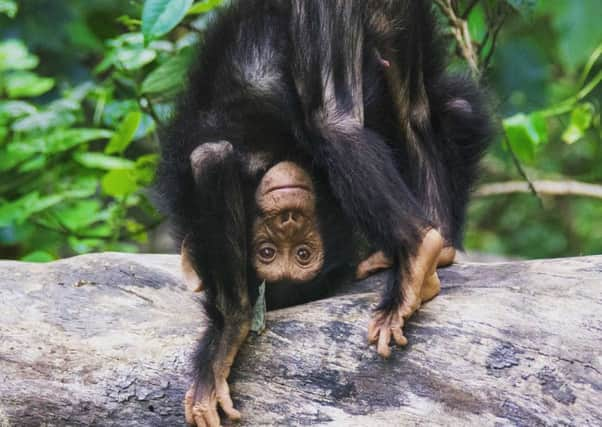Gorilla tactics '“ young children use ape lingo to get message across


Young children who have not yet learned to talk use the same gestures to communicate as their wild ape cousins, new research has revealed.
Studies, led by the University of St Andrews, show human children aged one to two years old, on the cusp of learning language, use 52 gestures to get their messages across. More than 95 per cent of these correspond with signals used by chimpanzees and gorillas.
Advertisement
Hide AdAdvertisement
Hide AdGreat apes, which include chimpanzees and gorillas, are humankind’s closest living relatives on the evolutionary tree.
Previous analysis of their natural behaviour has identified more than 80 different movements they use to convey their wishes, with scientists recently compiling a ‘dictionary’ to decode what they mean.
Lead researcher Dr Catherine Hobaiter, from the School of Psychology and Neuroscience at St Andrews, said: “Wild chimpanzees, gorillas, bonobos and orang-utans all use gestures to communicate their day-to-day requests, but until now there was always one ape missing from the picture – us.
“We used exactly the same approach to study young chimpanzees and children, which makes sense. Children are just tiny apes.”
The team, which included researchers from Scotland, Switzerland and Germany, compared their observations of children in their nursery and home environments with that of chimpanzees in the Budongo forest in Uganda.
The scientists were surprised to note how many actions the two species had in common.
Dr Hobaiter said: “We thought that we might find a few of these gestures – reaching out your palm to ask for something or sticking your hand up in the air – but we were amazed to see so many of the ape gestures used by the children.”
The team found both human and chimpanzees employed the gestures in a similar way, combining them to ask for various things.
Advertisement
Hide AdAdvertisement
Hide AdThey also found some key differences. Human children use pointing gestures far more than young apes do, while waving a hand such as to say hello or goodbye seems to be unique to Homo sapiens.
Fellow researcher Dr Verena Kersken, from Germany’s University of Göttingen, said: “Since chimpanzees and humans shared a common ancestor around five to six million years ago, we wanted to know whether our evolutionary history of communication is also reflected in human development.”
It seems this shared ancient gestural heritage continues to play an important role.